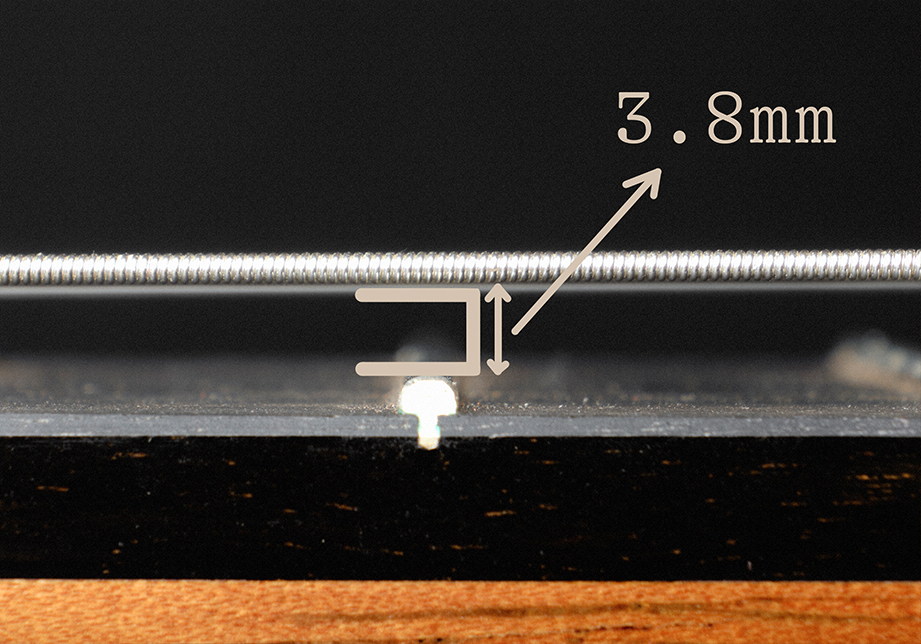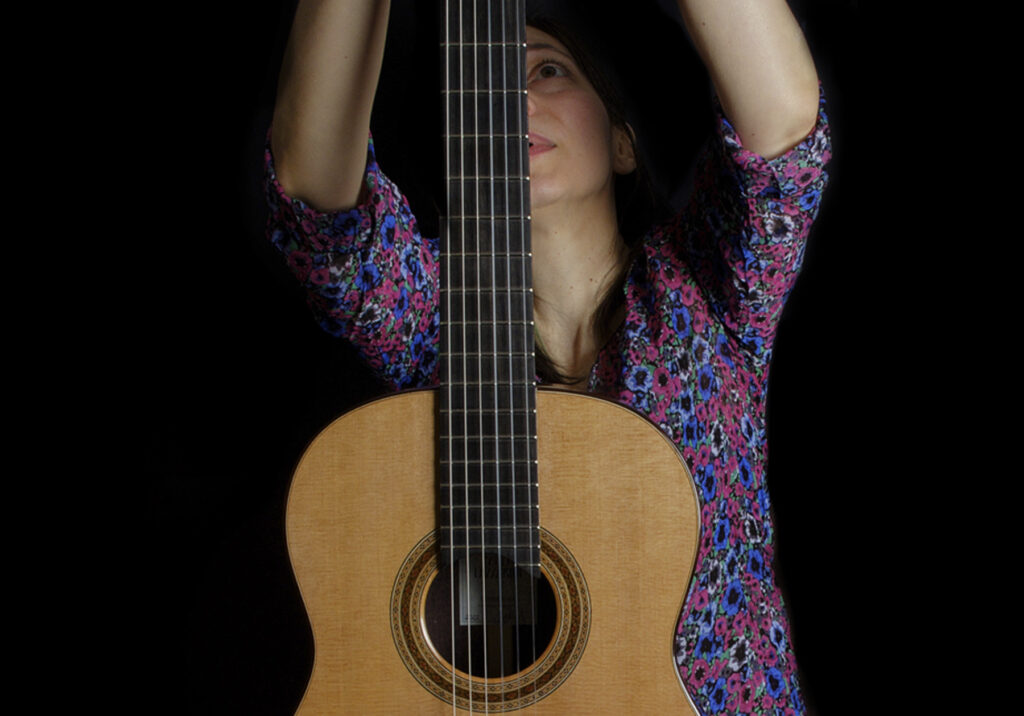And well, may I mention that I started… that I made my first guitar when I was 15 years old. I started in the city of Mar de Plata when I was 18 years old I came to live in Malaga, where I was trained in the workshop of José Ángel Chacón. And then where I met Víctor Quintanilla. who is a great friend with whom we also worked together for a while, And then we both started seeing in the guitar of Granada a little bit the consolidation of parameters, very successful and stable what a good guitar is, for a good classical guitar. About my guitars and about my work, that personal search is oriented in obtaining elastic tops. That is to say, the fan bracing system I use is a traditional system. I think the traditional guitar gathers the qualities necessary for one to use that has everything that a good guitar should have. In other words, comfort in playability is one of the characteristics I invest in a lot of my time in obtaining ergonomic instruments, both in the shape of the neck I use a well-rounded shape and with comfort details the height of this part It is similar to the guitars of Romanillos so that in certain positions the guitar is comfortable. The part from the bone to where the part of the tuning pegs starts. This allows that in certain positions, the guitar becomes comfortable. Then in the sonority my focus is linked to the guitar Classical and traditional from Granada with a fan bracing of five bars I mean, with a few bars, but working the curvature very well. I tend to dehydrate the workshop at about 35% humidity to stick the bar under the bridge. That gives it a natural structure and natural curvature to the top to prevent it from sinking between the bridge and the sound hole. These five bars allow me at the same time to also to have elasticity, not to overload the fan bracing. And especially in the high frequencies working on the sustain and the general dynamics of the instrument that has a wide dynamic range. I like the bass to be deep and I like the treble to be bright. And that, well, in itself, it can generate a contradiction Let’s say, cause for the treble to be bright sometimes you need a certain amount of resistance of the material, a certain hardness, but in order to to get low, deep basses the top needs to be very elastic So, the orientation of the bars As I said before, the bar below the bridge has one very important structural meaning And the five struts fan bracing, where usually I give a little bit more height to the bars in this area and I unload some material on the periphery This regarding the sound. Then it is very important for me the ease of playability, the comfort. That the instrument is easy to play That for the musician is guaranteed his comfort, his approach towards the instrument. Regarding the aesthetics of my guitars I try to make an elegant aesthetic and at the same time austere. I don’t like guitars loaded with ornaments The direction of the wood veneers I always use them in the face grain. That is to say, in the direction of the grain in both cases to make the part of the centre of the rosette to make the side purflings ornaments. In this way, the wood shines. It has a colour and it doesn’t tend to lean over time. A lot of old guitars that are made with the end grain method tend to dehydrate over time and and lose some of their lustre and dimension. The rosettes when they are made with the face grain, besides shining and having more beauty they are more stable in time Also the use of the colours of the veneer is something I pay attention to. And I’m always on a search for a balance between the thicknesses and the colours for there to be beauty. But at the same time balance and subtlety I try to make sure that the marquetry is not organically attached to the instrument. I can also talk about the template (Plantilla), which is a template of mine, which I evolved over the years also looking for a small model. I understand that guitars can sound very good and very loud, even powerful sounding even with small bodies And that also generates comfort to the guitarist Then I think there’s a knowledge that one has that is the intuition, plus all the data scientific and all the experimentation and controlled experimentation that one has\Nat the workshop so much in the measure of the thicknesses of the top, the back, the sides, the neck… So there’s absolute control of all the steps involved in the construction of these guitars But at the same time there is an extra knowledge that I believe that any human being has which is the intuition by which one unconsciously and immediate, many times often makes decisions to resolve these sound issues of the harmonics of the instrument, of the harmonics and the resonances of the wood, because the wood is a heterogeneous material and never one, no matter how much we’re talking about, of the same piece of wood never come out two same tops. Therefore, one could never always keep on a regular basis the same fan bracing, but that the heterogeneity proposed by the wood as a structure, leads us to the guitar makers to have a particular approximation on each part of wood that one uses on the guitar. Regarding the bridge I can mention, well, that in all cases I use Brazilian rosewood bridges Unique pieces, which have in this case 70 years of aging. It’s a wood lot that I got from a friend in Brazil The shape is also a bit peculiar. There’s a curvature, that is, instead of having a cut at 90 degrees between the junction of the fins and the bone housing I make a gentle decrease curvature to try to avoid deformation in the bridge and, consequently, the deformation in the top And also tries to mimic a little bit the look of the of the old bridges. The look of the guitar although it is a traditional guitar there’s a mix between an old aesthetic and a new aesthetic that I also want to contribute. I think all of us guitar makers have always the feeling that we can do better, to improve even on our own guitars and there is always a concern and a curiosity behind a guitar maker to improve the sound, the playability, the finishing, and the overall elegance of the instrument. I think that even a craftsman that works in his workshop is one more tool that works in the architecture of sound production in general What every good guitar has to have, for my understanding, and my criteria it is sonority first and foremost in the sound well, there’s already a personal search As I was saying earlier, expansive basses, a wide dynamic range, balance in the sustain, balance in the attack, in the tuning. Tuning is very ver important, a guitar that sounds great, but it’s out of tune, it brings mechanical problems to the musician and many times the musicians end up choosing perhaps playability and tuning over sound. And I think a good guitar has to have everything guaranteed Good playability is indispensable for a question of that union which exists between guitarists and guitars. What I can say as an important element in my guitars is the untiring search for the good playability of the instrument and spontaneous sound. A guitar that costs a lot of effort for the guitarist to get sounds out of the guitar it has a problem. In my opinion, the guitar has to be spontaneous. I mean, it needs to be alive. I mean, for that, well, there are technical issues why a guitar can be more It can be more spontaneous than another. Comfort, for example, is something important that is not only due to the height of the strings, but of the thickness of the neck, the elasticity of the top. I think there’s also a driving question of the left hand and there is also an important driving issue in the right hand And that has to do with the tension of the overall assembly, let’s say the neck on the one hand, the hardness of the neck and the elasticity of the top , both also play a part in the final comfort of the instrument I think the guitar has one history a tradition and… and aesthetics are no less important also in the instrument I consider a guitar first has to sound good, to be comfortable, in tune and easy to play. The aesthetic part is intrinsic to the guitar, i.e. a well elaborated rosette a good finishing, the rounded purflings, the rounded bindings, so that the musician feels more comfortable, they are things that are meticulous small details of technical skill that in small details they generate a pleasant feeling and natural and spontaneous feeling on the instrument. I think this is important. The musician spends a lot of hours on the guitars and he needs these things are guaranteed, although perhaps many times he doesn’t know what the differences are why he likes one better than the other The sum of these fine details and a little bit too sedimented over time, that’s a lot of years I’ve been making guitars And in each time I’ve been kind of polishing details until at last I could, consolidate a good instrument with all those details together… And I think good guitars have that capacity a lot of times to have all these aspects resolved, but one doesn’t finally end up knowing exactly what it is that, to the musician above all, what is what he likes best about one guitar or the other. Actually those things are also somewhere objective, that is to say, in the workshop there’s a lot of things that can be done especially in the fan bracing, in the thicknesses of the top, the kind of of how the bridge sticks the curvature given to the top. There is a personal demand for good workmanship in general, and the guitar does not escape this logic. There is a certain tendency that every process that every moment of gluing and process within the construction process to be perfect processes, let’s say, although there is no such thing as perfection, we try to take care of the builders the smallest details that guarantee that finally the guitar has a durability as well. So, we make guitars that are launched at live for many years and that are going to continue to sound even when we’re no longer around. Then these control processes of humidity, for example, to prevent the guitar from cracking in the future. or the dehydration of the curvatures we work on so carefully looking for sonority… It’s all these important moments where need to have absolute control of the humidity conditions temperature, glues, thicknesses, undesirable deformations that may arise within the process. And I think always behind of good guitar makers there are a very high level of demand. I think what the Spanish guitar brings is that expressivity in the sound that perhaps contemporary guitars don’t have it. Maybe they’re looking for a more compressed sound and more powerful. The Spanish guitar has that warmth, that it is indisputable, and that many guitarists, even guitarists that have gone in search of contemporary guitars, have returned to that sensitive and and sweet that the Spanish guitar has. And I think you can also get powerful instruments with traditional methods of construction. I think that the lattice on spruce top is is a type of fan bracing that takes away elasticity in the top, and the elasticity\Nis primarily what I’m looking for But I can also think that the lattice on a nomex double top\Ncan work differently Because already the nomex top has another mechanical scenario, therefore is not in itself a battle to see which is better than the other, but rather that each guitar maker has its own working system and it’s debugging it over the course of time, with all of the annotations that he’s making on the instrument on the different thicknesses and the weights, I’m very much in control of the weight of the instrumentation. so, you have to go checking the weight of all the parts that make up a guitar So, on that long road that every guitar maker carries with him inside his own workshop. There is in itself, there is enclosed a knowledge to which one can have access That knowledge, surely it is the same knowledge to which that was accessed by the great guitar makers of the history for whom I have absolute respect because they are the ones who finally paved the way. And we, let’s say, we’re standing on their shoulders. It wouldn’t exist the level of quality of guitars that are made today, otherwise they wouldn’t have existed the great makers of history who blazed a trail. And the weight of the tradition has its logic precisely because of that. it would be foolish to think that that one rediscovers the guitar. The guitar is already 200 years old of history, its trials and errors and to a greater or lesser extent, almost all the makers validated themselves already a certain structure that is very traditional. The joining of kerfing blocks (peones) with the top are something that in itself generates a structure from which, then comes another type of structure of technical and constructive decisions. So, I think that well, one is a little bit invited to move within that mix between the contemporary the sound that perhaps today’s guitarists and the luthier tradition that on the other hand, if we have guitars old ones that are in very good condition today we have to think they were well done and that they left out things that are already solved. It seems to me that looking to reinvent the guitar is a mistake. One has to have rigorous criteria about which about what has already been well done and to bring its own, which I do think it is that every guitar maker is called to put an imprint which is ultimately a spiritual imprinting of how one views the world of how one hears an architecture in the general sound to which you are invited to intervene. That is to say, one is an instrument that makes instruments for another human being to express his feelings. To express his soul. I think so, I think it’s very likely that out of the same curiosity just to make it work as a element of understanding about guitar making in general I can easily invest some time in developing a nomex double top or a lattice one But I’m telling you, it’s like, I think that… that you can’t move around so freely if you don’t know… Even in that first experimentation that I had on the guitar without having yet fully understood how it worked a good traditional guitar, I had to retrace my steps and go back to Granada, and that’s how it is. I mean, me, because maybe the young people are presumptuous and we have sometimes a certain arrogance about the world, and with the passing of the time, one begins to understand. That there are more people who make the things very well, and that here in Spain they make really excellent guitars So, what happened to me that I was living 10 years in Malaga, I had different different moments, some more daring than others, where maybe I was venturing into the… always in a cautious, investigative way, being careful in every detail… but I think there are two important moments in my life, one the unfolding of an interest and of imprinting a certain curiosity and some experimentation on the guitar and another the realisation that finally the guitar in Granada has got something going on something that is very stable and very powerful Which is why a lot of musicians all over the world choose this place to look for good guitars, and I thought about it, I mean strongly, I had… I went back to Granada. I had to go back to thinking the guitar again Because maybe I had different kind of fan bracing some… although always personal wanting to reinvent doing my own thing. And then I understood that doing my own thing was to continue or to stay in this… in this guitar making legacy where there are certain aspects that are covered and they cause a guitar to be good. Constructive processes are so tied one to the other that there is not so much room and not so much freedom for a guitar maker. And we start from an axis of symmetry that’s a little bit absolute, one starts from a symmetrical axis the guitar is symmetrical in all its dimension. My fans bracing are also symmetrical I’m not looking for asymmetry. Within that rigorous… within those rigorous steps, that lack of… freedom many times in the making process, I allow myself in the heads, for example, to put details that are asymmetrical and overturn the grain, the black strip of a Madagascar on the side, as if to generate a little bit of tension, a little bit of transgression if you will within that it’s aesthetic, let’s say, because the functionality is covered. I don’t usually put veneers between the rosewood and the cedar. I mean, I try to make sure that all the marquetry is put in with a meaning and with a concept, i.e., I don’t put veneers that are not intended to vibrate in some way or not involved in the production of sound. I mean, if it’s just aesthetic, I’ll take it off. That’s my approach. And maybe this asymmetry in in the look of the head is maybe the little seal of transgression or of freedom that one can have in a system that’s so rigorous, so careful and so so structured of steps to by which, by which you come to obtain a good instrument.
READ MORE
READ LESS
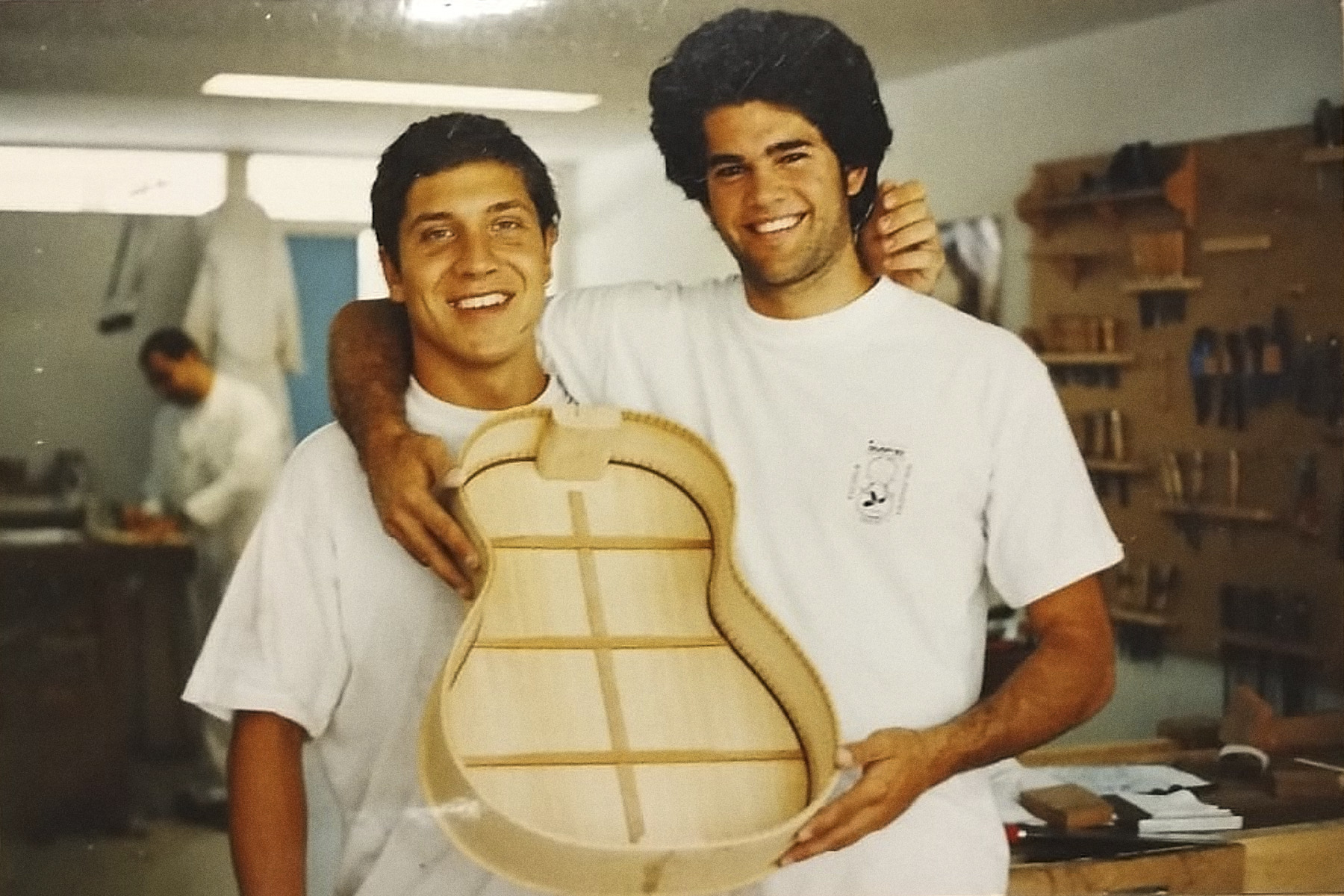
Alexis Parducci & Víctor Quintanilla
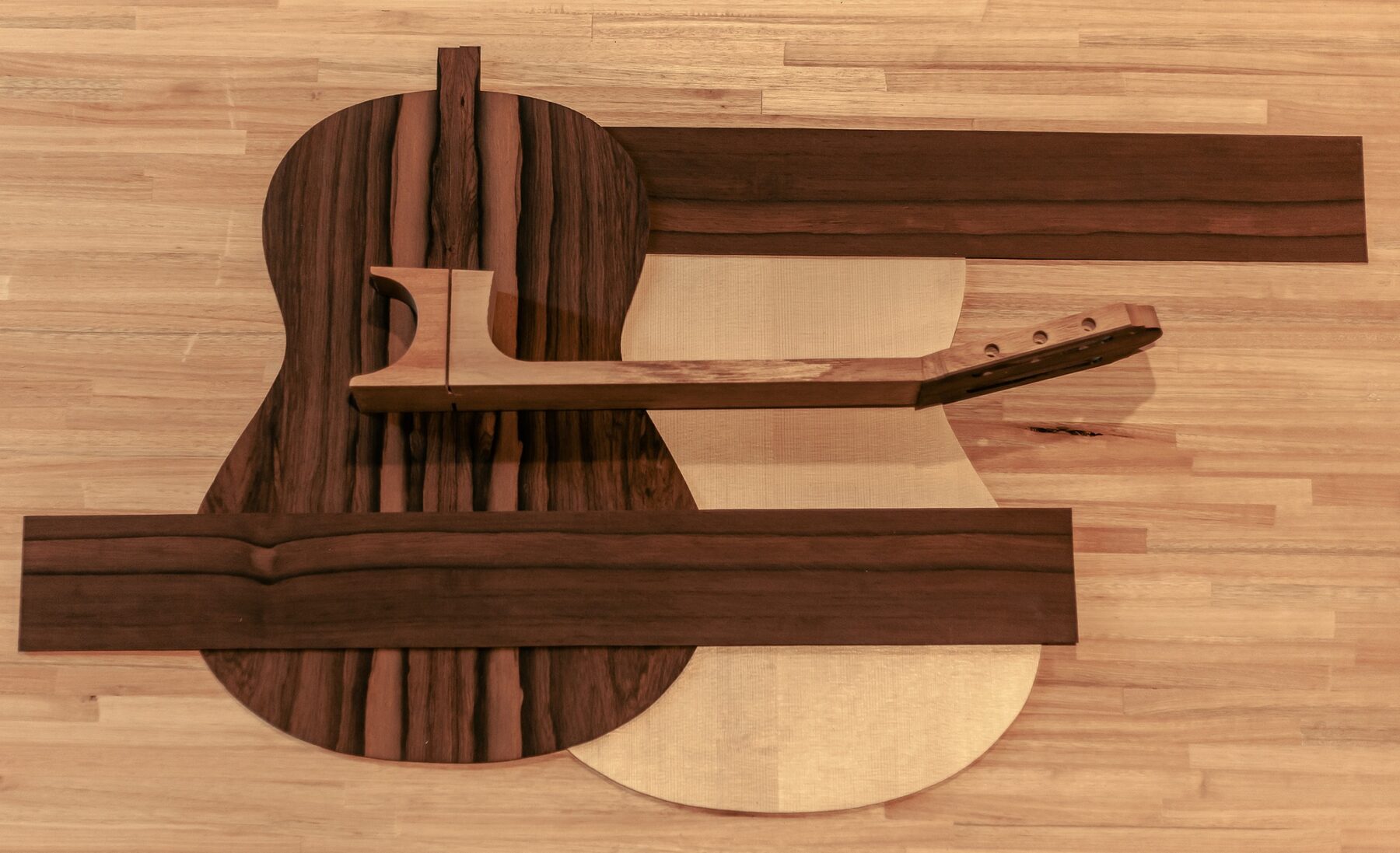
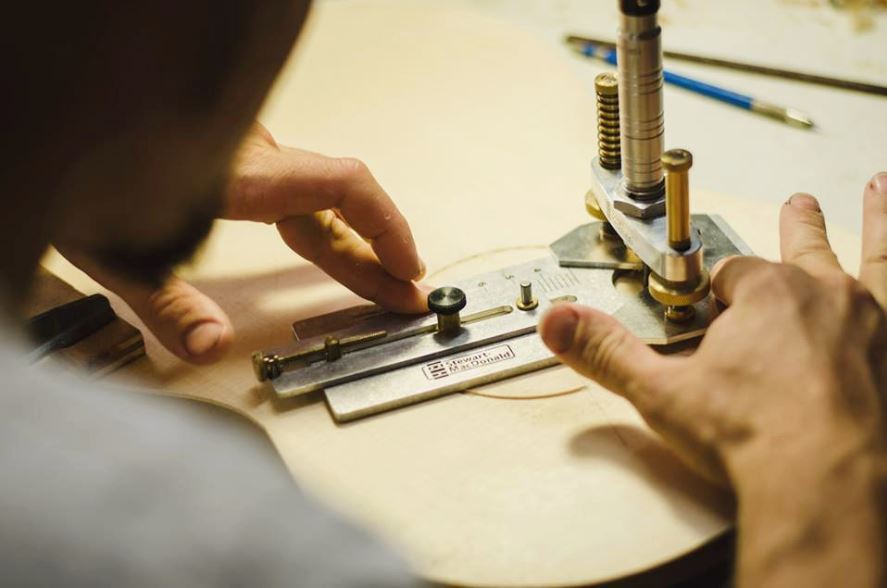
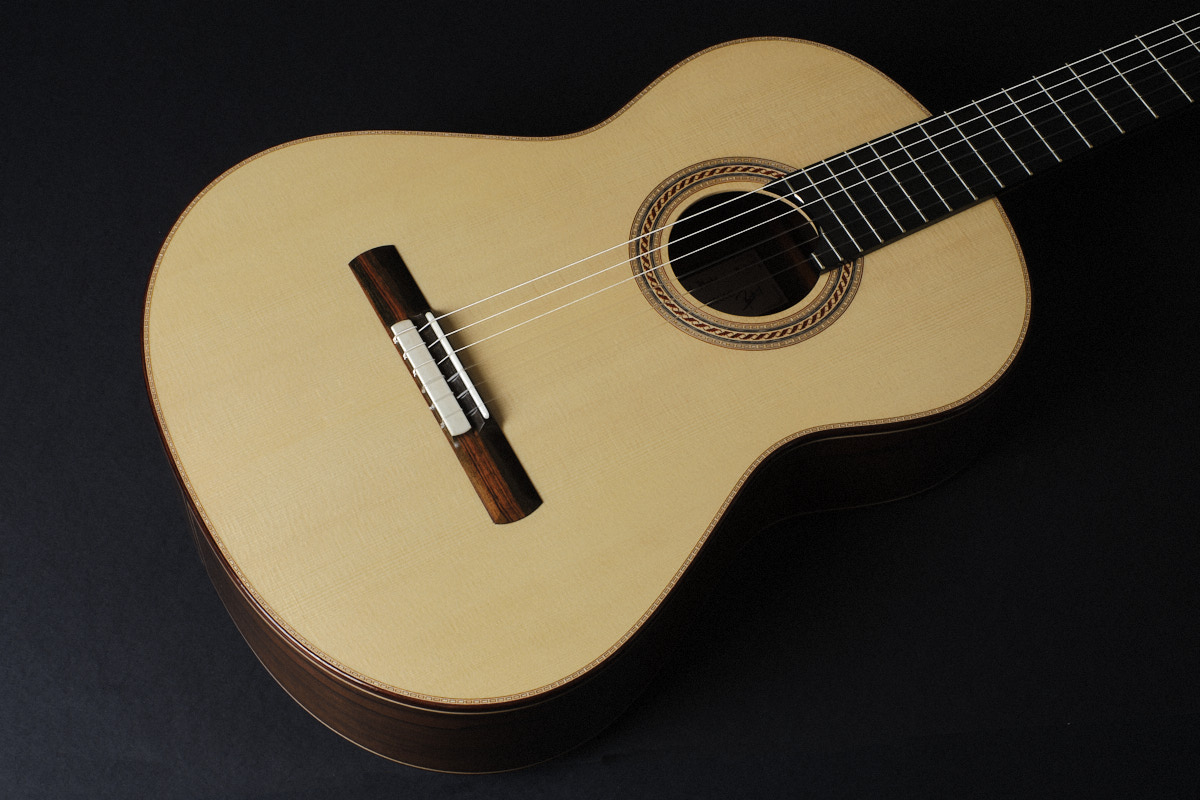
@maderaguitarras
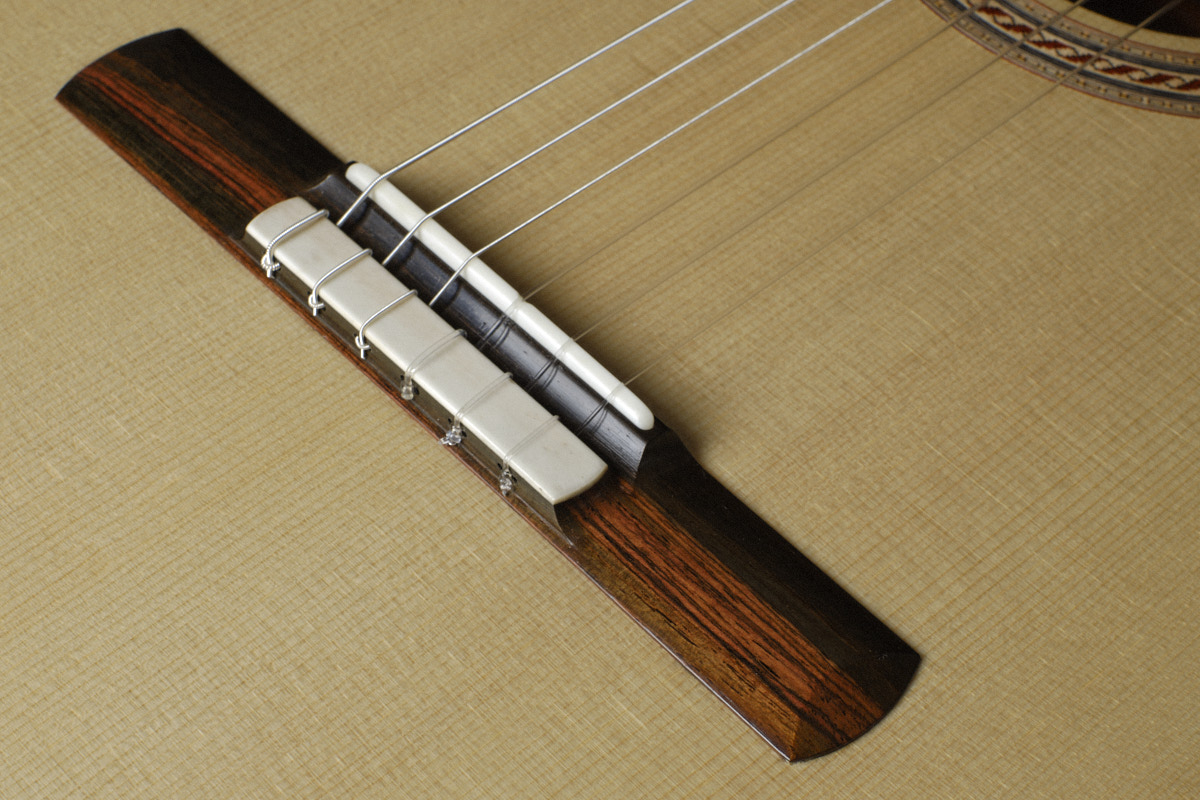
@maderaguitarras
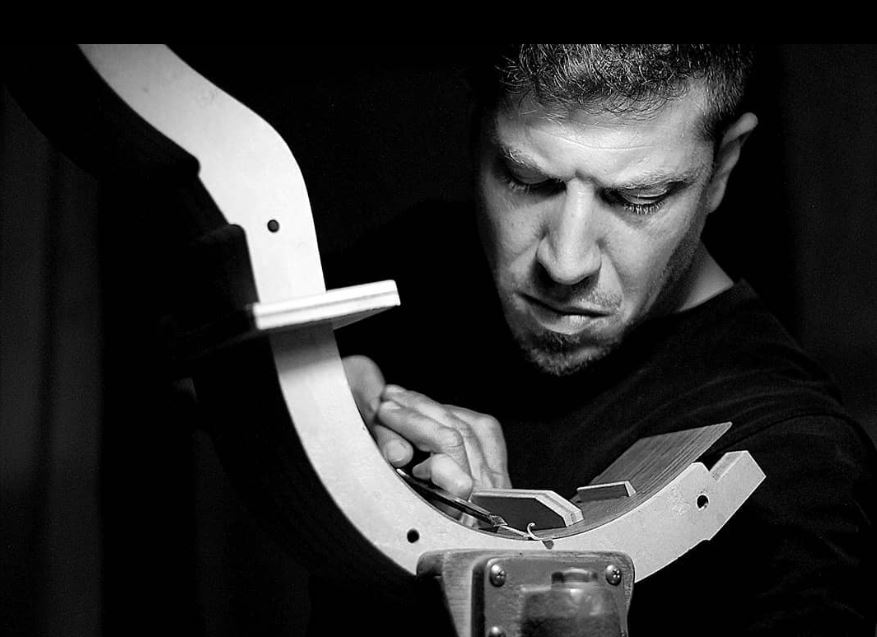
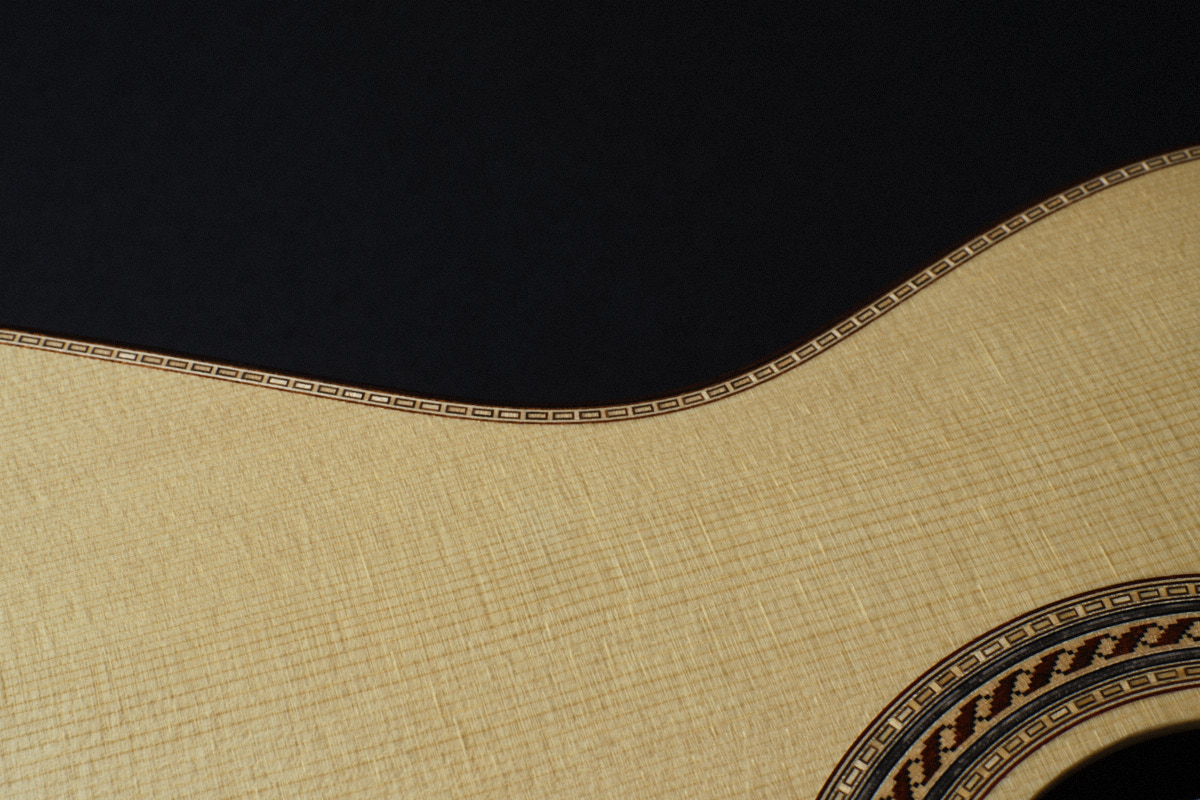
@maderaguitarras
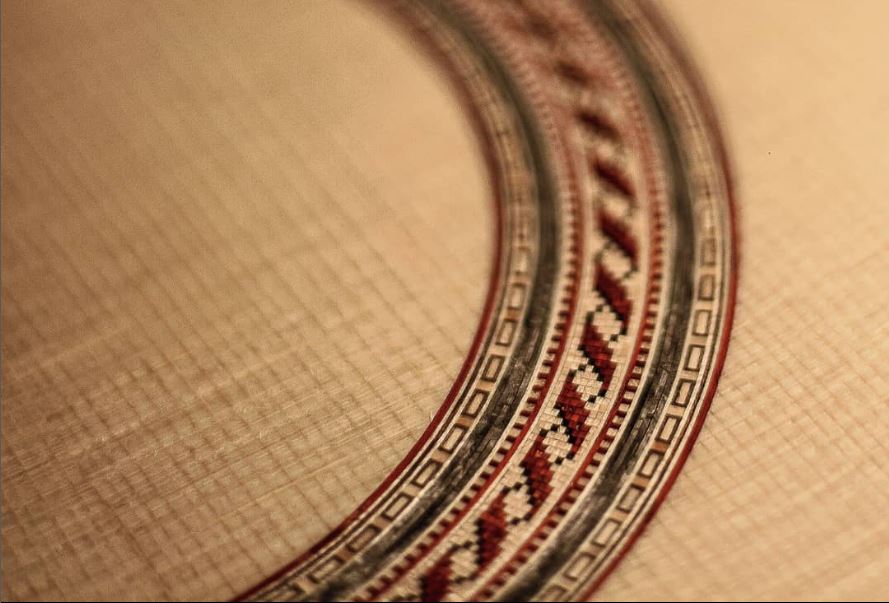
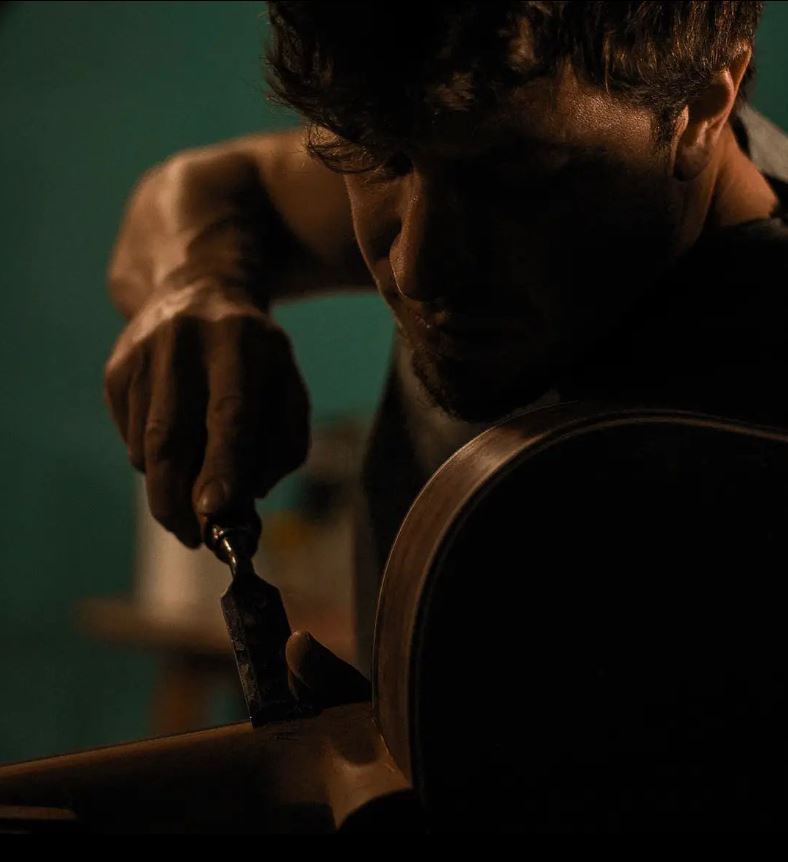
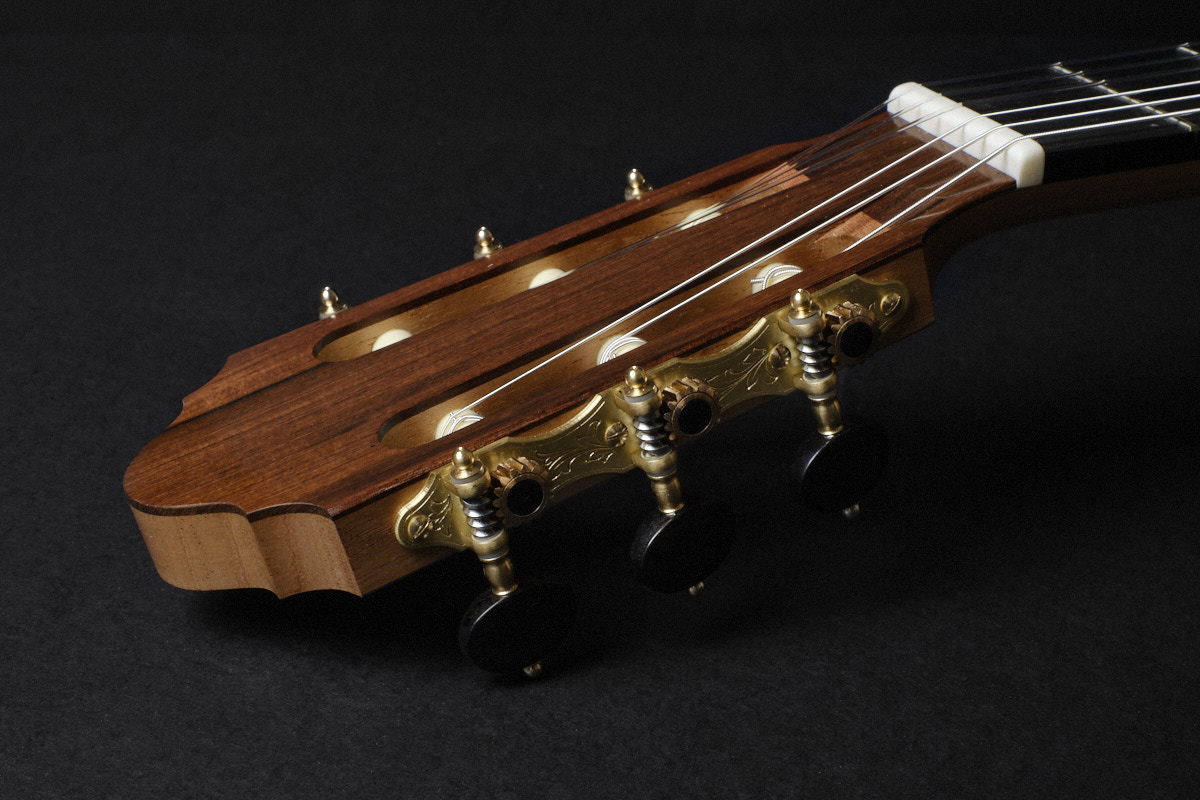
@maderaguitarras
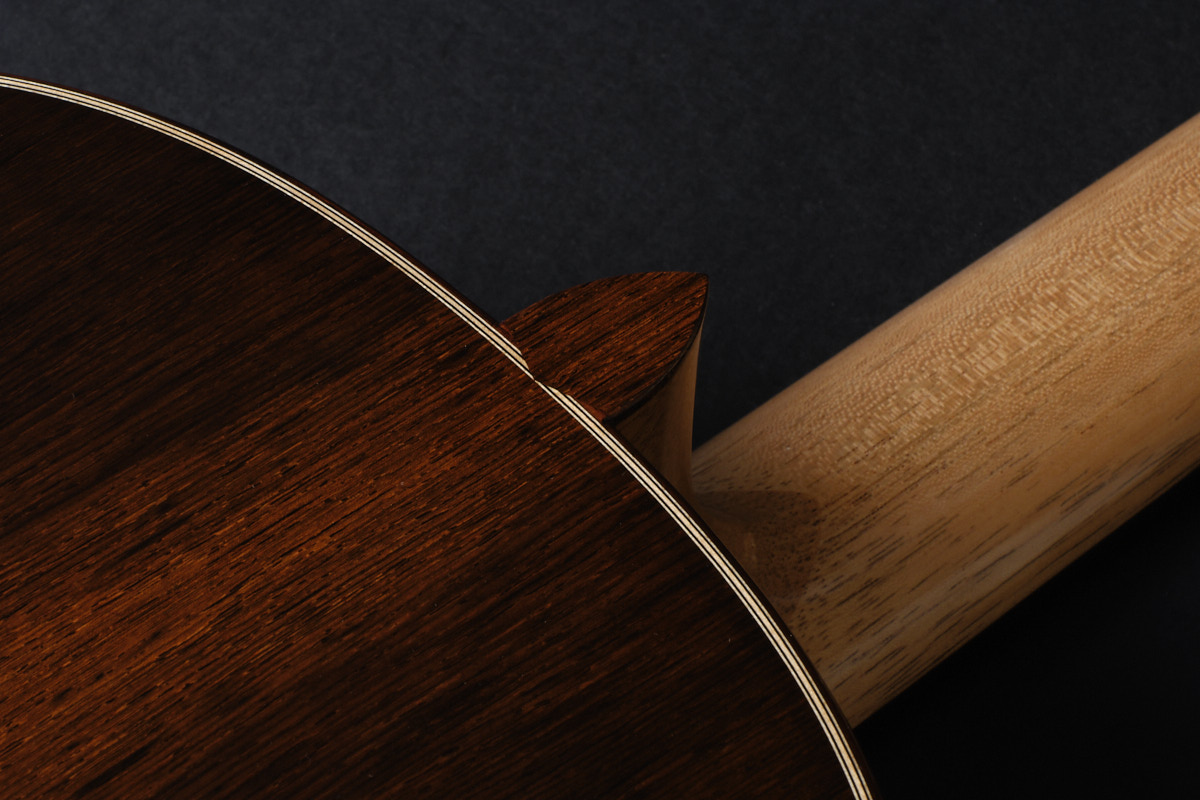
@maderaguitarras
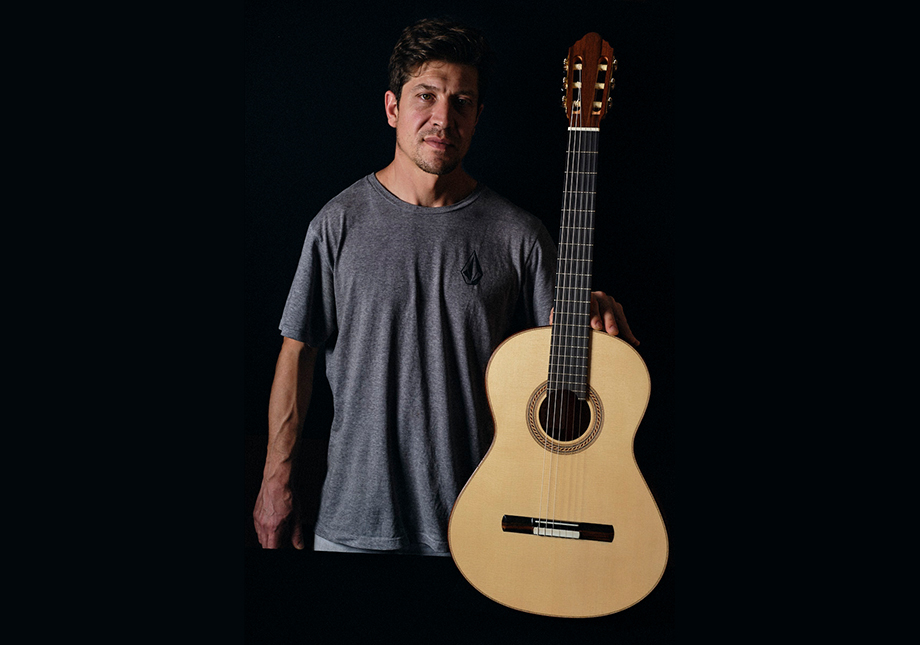
@maderaguitarras


